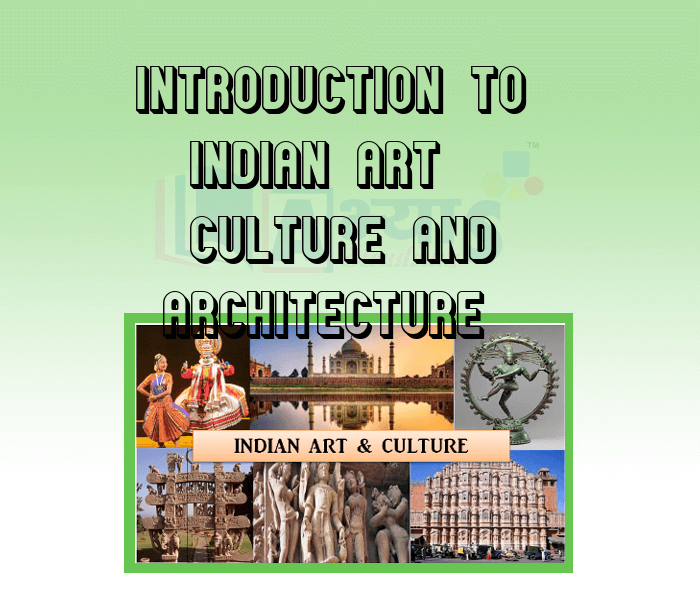Introduction to Indian Art Culture and Architecture












Introduction to Indian Art Culture and Architecture
Introduction to Indian Art Culture and Architecture: Indian art and architecture, works of art and architecture produced on the Indian subcontinent, which is now divided among India , Pakistan,and Bangladesh. In the western world, notable collections of Indian art can be seen in the British Museum, in the Victoria and Albert Museum of fine arts.
Art and culture represent the life and philosophy of a nation. Art consists of all creative pursuits like painting, literature, architecture, music and dance. Colonial rule introduced several new art forms, styles, materials and techniques which were creatively adapted by Indian artists for local patrons and markets, in both elite and popular circles. In India, arts traditionally thrived under the patronage of the rulers and nobles. In ancient times, art was religious in nature, though secular works were also known. During lateral medieval period, Persian and Arabic influences dominated Indian art.
Although a great deal of Indian secular art was produced , it was essentially made of perishable material and has not survived.what has survived in the medium of stone is religious art.In both Buddhist and Hindu art, symbolism in gesture, posture, and attribute contains many levels of meaning.Budhha had different hand postitions(mudras) signify religious states,such as the Enlightenment (Nirvana) , Meditation,and Preaching.
In Hindu sculpture, detities( Lord Vishnu, Krishna, and shiva) are frequently represented with many hands to indicate their power to perform multiple deeds at the same time , and the hands each carry their characters attributes. with the exception of Mughal art and architecture, which demands separate treatment, the major trends in Indian art - Hindu, Buddhist, and Jain-are discussed within this article.
Students / Parents Reviews [10]
About Abhyas metholodology the teachers are very nice and hardworking toward students.The Centre Head Mrs Anu Sethi is also a brilliant teacher.Abhyas has taught me how to overcome problems and has always taken my doubts and suppoeted me.

Shreya Shrivastava
8thA marvelous experience with Abhyas. I am glad to share that my ward has achieved more than enough at the Ambala ABHYAS centre. Years have passed on and more and more he has gained. May the centre flourish and develop day by day by the grace of God.

Archit Segal
7thMy experience with Abhyas is very good. I have learnt many things here like vedic maths and reasoning also. Teachers here first take our doubts and then there are assignments to verify our weak points.

Shivam Rana
7thAbhyas Methodology is very good. It is based on according to student and each child manages accordingly to its properly. Methodology has improved the abilities of students to shine them in future.

Manish Kumar
10thIt was good as the experience because as we had come here we had been improved in a such envirnment created here.Extra is taught which is beneficial for future.

Eshan Arora
8thMy experience was very good with Abhyas academy. I am studying here from 6th class and I am satisfied by its results in my life. I improved a lot here ahead of school syllabus.

Ayan Ghosh
8thBeing a parent, I saw my daughter improvement in her studies by seeing a good result in all day to day compititive exam TMO, NSO, IEO etc and as well as studies. I have got a fruitful result from my daughter.

Prisha Gupta
8thIt has a great methodology. Students here can get analysis to their test quickly.We can learn easily through PPTs and the testing methods are good. We know that where we have to practice

Barkha Arora
10thMy experience with Abhyas academy is very good. I did not think that my every subject coming here will be so strong. The main thing is that the online tests had made me learn here more things.

Hiya Gupta
8thOne of the best institutes to develope a child interest in studies.Provides SST and English knowledge also unlike other institutes. Teachers are co operative and friendly online tests andPPT develope practical knowledge also.
